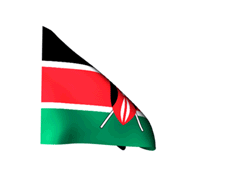SUPREME COURT SETS ASIDE THE HIGH COURT ORDER THAT USED AADHAAR CARD’S TO ESTABLISH THE VICTIM’S AGE IN A MOTOR ACCIDENT COMPENSATION CASE
A two-Judge Bench of the Supreme Court comprising of Justice Sanjay Karol and Justice Ujjal Bhuyan passed a Judgment dated 24-10-2024 in the matter of Saroj & Ors vs. IFFCO-Tokio General Insurance Co. & Ors, Special Leave Petition (C) SLP Nos. 23939-23940 of 2023 and observed that, rather than using the date of birth on the Aadhaar card to determine the deceased’s age, it would be more accurate to rely on the date of birth recorded in the school leaving certificate, which holds statutory recognition under Section 94 of the Juvenile Justice (Care and Protection of Children) Act, 2015 (Presumption and determination of age).
FACTS:
1) That the aforesaid Appeal was filed before the Apex Court by one, Saroj & Ors. (Appellants) against the IFFCO-TOKIO General Insurance Co. & Ors (Respondents), who challenged the decision of the Hon’ble High Court of Punjab and Haryana, Chandigarh (High Court) which, vide, Order dated 09.03.2023, where the High Court reduced the compensation of 19,35,400/- upto Rs.9,22,336/- which was decided by the Motor Accidents Claim Tribunal (MACT) by the Order dated 26.04.2017.
2) The wife and sons of the deceased, Silak Ram, filed these Appeals following the incident that occurred on 04.08.2015. Silak Ram was traveling on a motorcycle with Rohit, who sustained injuries in the accident. They were found lying injured on the side of the road. Silak Ram succumbed to his injuries, while Rohit was taken to Medical College, Rohtak, for treatment.
3) Krishan discovered both Silak Ram and Rohit on the road and reported the incident to the Police. During the investigation, Rohit provided a statement detailing the particulars of the offending vehicles involved in the accident. As a result, the Police registered I.R. No. 481/2015 on 04.08.2015, under Sections 279, 337, and 304A of the Indian Penal Code, 1860 (IPC) at Police Station Sampla.
MACT OBSERVATIONS:
MACT calculated the compensation based on a notional monthly income of Rs. 9,000, taking into account the deceased’s age and applying the appropriate multiplier as per the Claimant’s documents. This included future prospects at 30%.
MACT awarded Rs. 19,35,400/- to the Claimants with an interest rate of 7.5% from the date of filing the claim Petition. For the minor claimants, Rs. 6 lakhs each was directed to be kept in a fixed deposit until they reached the age of majority or five years, whichever was later.
The MACT took into account district-specific wage rates as notified by the Deputy Commissioner, rather than using the uniform minimum wage for the entire state. This district-based rate was seen as a more accurate reflection of the deceased’s income.
Testimonies indicated that the deceased was an agriculturist owning his own tractor and JCB machine, supporting the MACT’s calculation of his income based on local economic conditions.
HIGH COURT:
The High Court reduced the total compensation awarded from Rs. 19,35,400 to Rs. 9,22,336, primarily by recalculating the notional income and adjusting the multiplier.
The High Court used the minimum wage rates applicable statewide, rather than the district-specific rates applied by the MACT, arguing that a uniform wage rate was a better measure for calculating the deceased’s income.
To determine the deceased’s age, the High Court relied on the date of birth mentioned in his Aadhaar card (January 1, 1969), which indicated he was 47 years old at the time of the accident. This led the Court to apply a multiplier of 13, which reduced the compensation amount.
The High Court reduced the interest rate from 7.5% (awarded by the MACT) to 6% on the revised compensation amount, further impacting the total award.
SUPREME COURT:
Aggrieved by the High Court Order dated 09-03-2023, the Appellant filed SLP (C) Nos. 2393–23940 of 2023 before the Supreme Court. The Apex Court vide Order dated 03-05-2024 held as follows:
ISSUES:
Whether the age of the deceased should be determined based on the date of birth in the Aadhaar card (as used by the High Court) or the school leaving certificate, which has statutory recognition under Section 94 of the Juvenile Justice (Care and Protection of Children) Act, 2015.
Whether the notional income should be calculated using the statewide minimum wage rates (as applied by the High Court) or the district-specific wage rates notified by the Deputy Commissioner (as applied by the MACT).
Whether the High Court was justified in reducing the total compensation awarded by the MACT, given the principles of appellate review and the requirement that compensation be just and fair to the affected family.
Whether the High Court was correct in reducing the interest rate from 7.5% (awarded by the MACT) to 6%, or if a higher interest rate was warranted to ensure fair compensation.
OBSERVATIONS:
The Court emphasized that the age of the deceased should be determined based on the school leaving certificate, which has statutory recognition under Section 94 of the Juvenile Justice (Care and Protection of Children) Act, 2015. It rejected the High Court’s reliance on the Aadhaar card, reaffirming that a school certificate provides more authoritative proof of age in legal contexts.
Using the school leaving certificate, which indicated the deceased was born on 07.10.1970, the Supreme Court determined the deceased’s age to be 45 years at the time of the accident. This age bracket warranted a multiplier of 14, instead of the multiplier of 13 applied by the High Court.
The Supreme Court found that the MACT’s approach in using district-specific wage rates notified by the Deputy Commissioner, rather than the statewide minimum wage rate, was more accurate. This method better reflected the deceased’s income as an agriculturist with his own assets, and thus, the Supreme Court restored the MACT’s original notional income determination.
The Court highlighted the need for the awarded compensation to be fair and just, given the severe impact on the claimant’s family due to the death. Accordingly, the Court raised the interest rate on the compensation amount to 8% from the date of the claim’s filing, rather than the reduced 6% rate set by the High Court.
CONCLUSION:
Based on the aforementioned facts, the Supreme Court set aside the High Court Order and recalculated the compensation to Rs. 15,00,000 with 8% interest, rounding up the amount in favour of the claimants to provide just and reasonable relief, and directed the release of the funds to the rightful claimants as per the MACT’s original distribution instructions.
Sakshi Raghuvanshi
Senior Associate
The Indian Lawyer





































Leave a Reply